#celtic tree calendar
Text
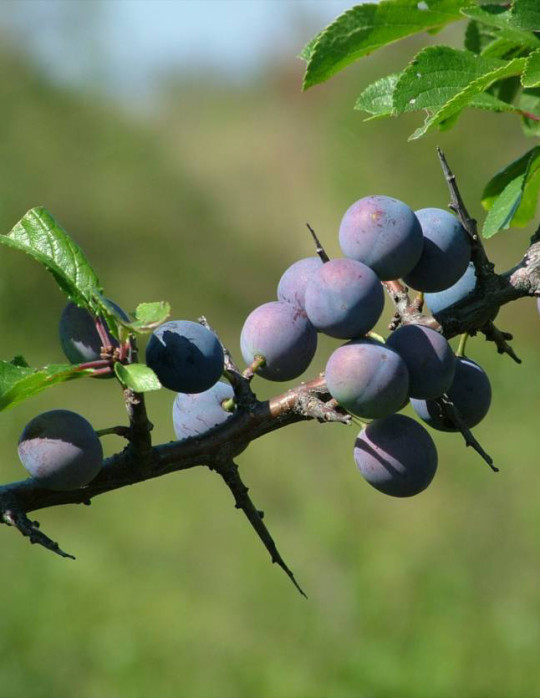
Legends and myths about trees
Celtic beliefs in trees (24)
Ss for Straif (Blackthorn) - Samhain/Hallowe'en, opening the veil between this world and the spirit world…
“Mother of the Forest – The Celtic Tree Calendar (Ref), The Beginning of Winter”
Colour: red; Star: Mars, Saturn; Gemstone: black opal; Gender: female; Patron: Morrigan; Symbol: inevitability of death, protection + revenge, discord + insidiousness
Blackthorn forms vigorous young trees from the roots, from which dense, thorny bushes grow in dense clumps. Armed with sharp thorns, which can damage human skin. It already starts flowering in early spring, at the beginning of March, and with the onset of winter it produces black berries, commonly known as 'sloes'.
Samhain is the most important festival in the Celtic world, celebrated on 1st November to mark the beginning of winter and therefore the new year. The name 'Samhain' means 'end of summer'. The seasons change from summer to winter (the time of the dead) with this festival. It is a period of short days and darkness, but it is a necessary period for nature to enter a peaceful rest and welcome the bright spring. In the calendar of agricultural societies, this is an important stage for the germination of crop seeds.
Samhain was the solemn festival, when fires were lit and sacrifices were offered to gods such as Taranis and Teutates. Importantly, it was believed that on the eve of this day, 31 October, a passage between this world and the spirit world was opened, allowing inhabitants from the other world to come and visit this world freely and interact with humans in this world. However, while the comings and goings were sometimes favourable, it was also envisaged to be dangerous.
On the Samhain eve, children went from house to house to collect festive offerings. It was also customary to celebrate Samhain by placing a brightly burning candle inside a hollowed-out turnip at the entrance to the house.
Blackthorn is a tree traditionally used for black magic and witchcraft, and its thorns remind us of our own insidious roots. We must remember that we hurt ourselves and others in many ways. If we think about how to avoid hurting each other and courageously face our own insidious roots, blackthorn can guide us to overcome this dark side of our human nature and help us to return the debts of our hearts.
It also helps us to accept the fact that death is something from which no one can escape.
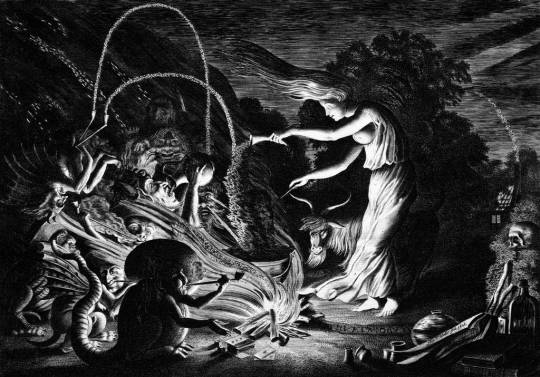
木にまつわる伝説・神話
ケルト人の樹木の信仰 (24)
SはStraif (リンボク) -サウィン/ハロウイーン、現世と霊界のヴェールを開く…
『森の母 〜 ケルトの木の暦(参照)、冬の始まり』
色: 赤; 星: 火星、土星; 宝石: ブラックオパール; 性: 女性; 守護神: モリガン; シンボル: 死の不可避性、保護+復讐、不和+陰湿
リンボクは根の部分から活力のある若木を形成し、ここから棘だらけの茂みがびっしりと密生する。鋭い棘で武装したリンボクは密生した藪をつくり、人間の肌を傷つける。3月初旬、早春にもう花をつけ始め、冬の訪れと共に、通称「スロー」という黒っぽい実がなる。
サウィンとは、ケルト世界で最も重要なお祭りで、11月1日に冬の始まり、つまり新年の始まりを祝う。「サウィン」とは「夏の終わり」を意味する。この祭りを境に季節は夏から冬(死者の時期)に変わる。日が短く暗い時期だが、自然が穏やかな休息に入り、明るい春を迎えるために必要な期間である。農耕社会の暦では、作物の種が発芽する重要な時期でもある。
サウィンは最も重要な厳粛な祭りで、火が焚かれ、タラニスやテウタテスといった神々に生贄が捧げられた。重要なのは、この日の前夜、10月31日に現世と霊界を結ぶ通路が開かれ、あの世の住人が自由に現世を訪れ、現世の人間と交流できるようになると信じられていたことだ。しかし、その行き来は時に好ましいものであったが、危険なものであることも想定されていた。
サウィンの前夜には、子供たちが家々を回り、お祝い用のお供えを集めた。サウィンを祝って、内部をくり抜いたカブの中に、明るく燃えたろうそくを立て、家の入り口に飾る風習もあった。
リンボクは伝統的に黒魔術や呪術に使われる木であり、その棘は私たち自身の陰湿な心根を思い起こさせる。私たちは、さまざまな形で自分自身や他人を傷つけていることを忘れてはならない。どうすれば互いを傷つけずにすむかを考え、勇気を持って自分自身の陰湿な心根と向き合えば、リンボクは人間が持つこの暗い側面を克服するように導いてくれ、心の負い目を返上するように導いてくれる。
そして、死は誰も逃れることのできないものであるという事実を受け入れる助けにもなってくれる。
#trees#tree legend#tree myth#folklore#mythology#legend#celtic tree calendar#celtic world#time of the dead#winter#halloween#samhain#nature#art#turnip
127 notes
·
View notes
Note
Oh great witchstorian, I bring to you an offering of tea and coffee and the promise of "I owe ya one" in return for an answer to a question of mine:
Do you know what that big deal about "Celtic astrology" is? Which group did it come from? Where's the rest of the context necessary to understand it? Or was it created recently and then applied backwards?
~Jasper from @jasper-pagan-witch
Ohhhhh THAT.... -claps on the hat-
Okay so, here's the thing. The ogham letter calendar? That exists. We have evidence of it dating back to the single-digit CE years. That's just how some Celtic peoples marked their year.
The Celtic Tree Calendar setup we see today, particularly the mapping of the tree calendar onto a "zodiac," is an entirely modern invention. It was invented by Robert Graves, yet another contribution to modern paganism from his novel, The White Goddess. (Honestly, I don't know how anyone can look down their nose at pop culture paganism when so much of Wicca and nondenominational paganism based upon Wicca can trace its' roots - pun fully intended - back to fiction and poetry from the 1940s.)
Graves was one of those people who was REALLY into trying to figure out what the ancient Druids were up to, and he made an attempt to figure that out by charting the mythology of Ireland, England, and certain parts of mainland Europe and the Middle East. One of the theories he put forward in The White Goddess was this idea of a tree calendar that more or less followed the same model as the Greek zodiac we're all familiar with from our daily horoscopes.
Now, witches, pagans, and New Agers just LOVE a good zodiac, and while there are many ways of casting a horoscope or calculating a birth chart, the systems do not always overlap or work in the same ways. But since when have details mattered when you can have a tree instead of a constellation for your birth sign, or a "Native American Moon Zodiac" infographic that just looks so cool and free-spirit-y on your Facebook page?
So yeah. When you see anything referring to a "Celtic tree calendar" that presents the idea as an astrological system? Completely modern invention.
Is it fun? Absolutely. Is it a neat thing we can do if we want? Sure.
Is it real in the sense of being created or used as an astrological device by pre-Christian Celtic pagans? Not even remotely.
Hope this answers your question!
#fallout-and-dragon-age#jasper-pagan-witch#witchcraft#pagan#paganism#witchblr#history of witchcraft#celtic tree calendar#astrology#zodiac#Witchstorian#Bree answers your inquiries
76 notes
·
View notes
Text

I haven’t put up a calendar in 5+ years! Thanks to @minnesotadruids , I have one featuring his photography of Minnesota, which includes moonrise/moonset times and even some important LGBTQ+ dates. I got myself a set of Celtic tree calendar stickers to mark each month (and while birch is “usually” the January tree, I’m following a slightly different calendar that treats Samhain as the New Year).
The stickers come from MagicInLivingRoom on Etsy!
1 note
·
View note
Text


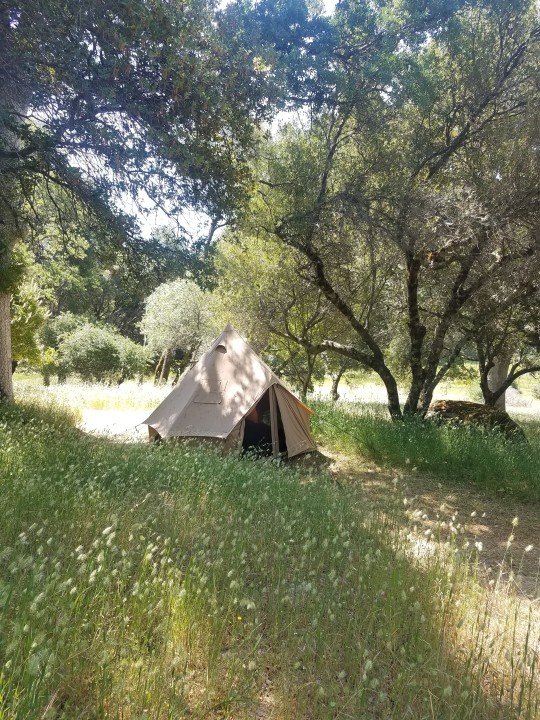
:: summer days & witchy reads ::
((Celtic Tree Magic by the Witches' Almanac))
2 notes
·
View notes
Text
2023 Celtic Wheel of the Year Moon Phase Calendar with Tree of Life

The 2023 Celtic Wheel of the Year Moon Phase Calendar is here!! Available in seven sizes, this lunar calendar features each moon phase of 2023 as well as all eight Celtic holidays. The Tree of Life is encircled with Celtic knot designs and the eight spokes of the wheel separate the moon phases.
Look More Closely @ WildHemlock.Com
#celtic#celtic wheel of the year#wheel of the year#samhain#yule#mabon#beltane#tree of life#celtic tree of life#spooky#spooky season#witch decor#witchy decor#moon phase calendar#moon phases#lunar phases#lunar calendar#moon calendar#2023 calendar#witchblr#witchy#moon child#astrology#baby witch#moon#celtic witch#celtic paganism#pagan witch#pagan sabbats#beginner witch
7 notes
·
View notes
Text
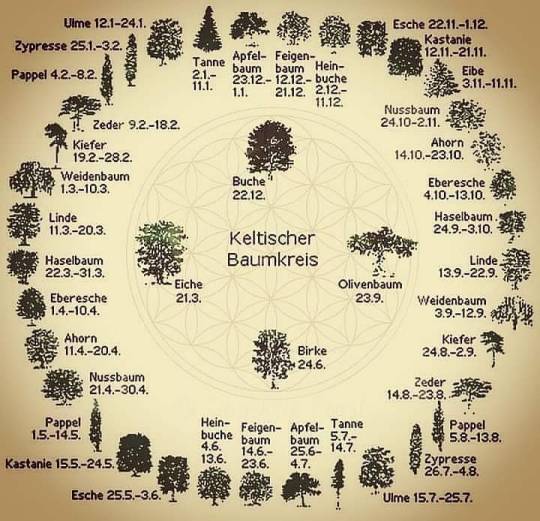
celtic tree calendar
According to the Celtic faith, humans were created from trees.
Each birth date can be attributed to one of 21 species of trees. These in turn decipher the character of those born that day.
4 notes
·
View notes
Text
Strength of Ivy
Hello and welcome to the 11th (lunar) month of the year on our ‘Celtic Tree Calendar’ , ‘the month of Ivy‘ which begins tomorrow (September 30th) and takes us through to October 27th .. 🙂
Now although, technically speaking, not a tree, Ivy uses trees to support its growth by way of a ruthless tenacity and power so strong, it can sometimes even kill its host!
So tough is this plant that a very…

View On WordPress
0 notes
Text
It's Time for Samhain! (Oct 31- Nov 1)
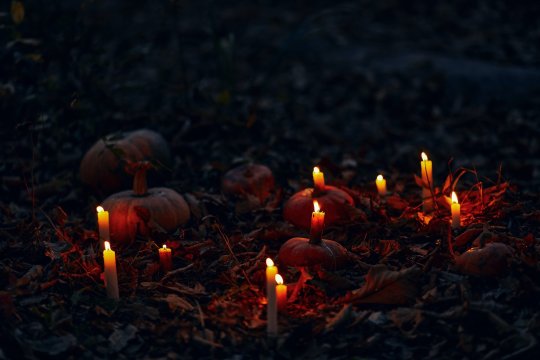
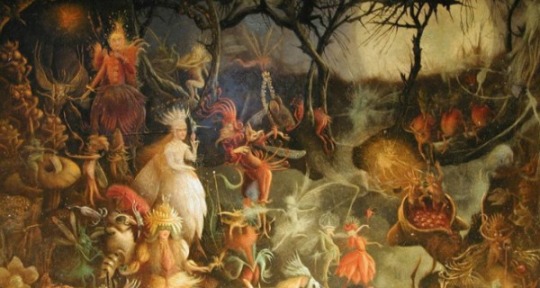
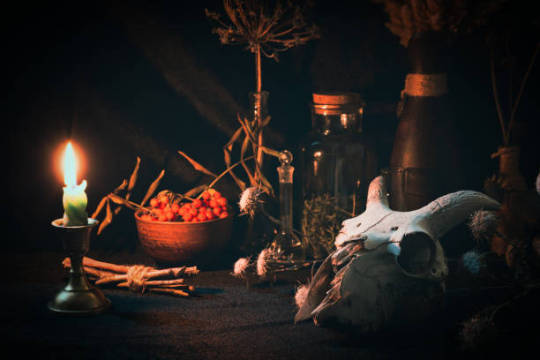
What is Samhain? In the Celtic calendar, Samhain marks the end of summer and the harvest season, and the beginning of the dark, cold winter months. It falls opposite Beltane on May 1, which represents the beginning of spring and the life-filled growing season.
It’s believed that the veil between the living and the dead is thinnest on Samhain. Historically, people were worried that they would encounter ornery spirits if they ventured outside on Samhain night, so they dressed as ghosts or wore masks to disguise themselves. Folks would leave treats on their front porch or place an extra setting at the table to welcome any friendly spirits who stopped by. You can see how these Samhain rituals easily morphed into our modern-day version of trick-or-treating in costume.
Nighttime bonfires were another of the long-standing Samhain rituals - this one was thought to help combat the impending darkness of winter and the fearful chill that accompanied the idea of roaming spirits. Because the veil between living and dead is believed to be the thinnest on this night, Samhain is also a powerful night for divination and spellcasting by candlelight.
Usual Symbols of Samhain:
Ale or Mead
Pumpkins
Skulls
Besom or Broom
Beans
Cauldron
Bats
Keys
Squash
Pomegranate
Nuts
Apples and Cider
Bones
Herbs and Plants for Samhain:
Rosemary – Associated with remembrance and is needed during this season in taking time to honor the memories of our ancestors and other lost loved ones. Can be used in an incense blend and at ancestor altar
Fall Flowers – Includes flowers like marigolds and chrysanthemums. Are associated with protection and chrysanthemums come in handy with connecting to the spirit world
Apples (the fruit, branches and blossoms) – Is considered sacred to a lot of gods. A good apple harvest means that the gods have shown the community their favor. You can use apples in different rituals, especially divination
Pomegranates – Is associated with the realm of the underworld and helps with communication with the dead. It is also associated with fertility of the fall.
Squashes, Pumpkins and Gourds – Is associated with abundance and provides sustenance for your family when the fields become bare and covered in snow. Is linked to psychic awareness and development and protection.
Mugwort – Is associated with divination and dreaming. Using Mugwort baths or incenses in the rituals can focus on treating depression, especially with the seasons changing
Rowan Trees – The branches and berries are a way to keep evil spirits out of your house and are associated with good health. If you plant a tree near a grave, it will prevent the dead from rising.
Sage – Is associated with cleansing and grounding. Is a great incense to cleanse your home to bring in the new and out with the old
Hawthorn – Has been associated with the gateway between humans and the spirit world. Is also rumored to an area where you can see fairies.
Crystals for Samhain:
Amethyst – Aids in opening one’s third eye and is valuable to be able to see Samhain’s spirits around
Black Obsidian – Is great for grounding and protect from evil spirits. Can be used in scrying when speaking to deities and spirits of Samhain
Citrine – Is used to honor the sun. Aids in prosperity spells and carries joy
Black Tourmaline – Wards off unwanted spirits from your property and can be buried into the ground to protect from psychic attacks and spirit intrusion
Orange Calcite – Orange is a sacred color to Samhain. This stone is associated with one’s sacral chakra and can cleanse and align reproductive organs, sexuality and get creativity flowing
Bloodstone – Known to heal cardiovascular illness and disease. Can help with ancestry links and work
Spirit Quartz – Is great in helping communicate with the spirits of Samhain and releasing old and toxic habits
Lepidolite – Used to appease the fairies that roam during Samhain
Serpentine – Is associated with snakes and aids in remembering past lives. Loki seems to like this stone and may be great to use for him if you work with him during this season
Dragonstone – Dragons are guardians of the earth, spirits of place, and connect us to Mother Nature. Helps say goodbye to the old years and our old selves
Skull shaped Stones – Since skulls are symbols of Samhain, skull shaped stone can help with symbolism during this holiday. They represent the life-death-rebirth cycle, wisdom and our ancestors
Spells and Rituals:
A Samhain Tea (Apple and Hawthorn Berry)
1 apple, sliced
2 Tablespoon dried hawthorn berries (or 4 Tablespoons fresh)
1 cinnamon stick
A pinch of cloves
4 cups water
Honey, to taste (optional)
Combine all ingredients in a small stockpot.
Bring to a boil, then reduce heat and simmer, covered, for 10 minutes.
Strain the plant material from the tea, then transfer the tea into two mugs.
Enjoy one for yourself, and leave the other on your table or front porch to nourish any wandering spirits who may pass while the veil between the living and the dead is thinnest.
A Pumpkin Spell for Prosperity
A pumpkin
Some paint
Go to the pumpkin patch (or local store) and select a pumpkin. Or let the pumpkin choose you.
Bring it home and paint prosperity symbols on it – money signs, runes for prosperity or harvest glyphs (whatever means prosperity to you).
Then place by your front door to invite prosperous vibes into your home this Samhain season.
Bonfire Release Purification Spell
Paper
Pen
Source of fire (bonfire, fireplace, candle flame)
Gather your materials and sit by the fire.
Take a few minutes to just listen to the fire crackling.
Gaze into the flames and connect with this powerful element.
Next begin to think about what habit or person you are releasing this Samhain. Think about why you’re purifying your life from this thing or person.
Then write the habit or person down on the piece of paper.
Fold it away from you 3 times.
Hold it in your hands and allow all of the negative thoughts and energies inside of you to “drain” out of you and into the paper.
Then throw it in the fire and say,
“After this Samhain, never again. Never again. I release _________ from my life by the power of the Samhain fire. So, mote it be.”
How to Make a Samhain Altar
Beautiful autumn leaves or flowers that you collect on a nature walk
A candle
A mugwort bundle
A string of rowan beads
A bowl of apples or a small pumpkin
A hawthorn wand or bowl of freshly picked hawthorn berries
A picture of your ancestors
To make an altar, first find a corner of your home or a table surface where you can arrange a few treasures. You don’t need a ton of space. You could use the top of a dresser, the corner of your desk, an unused side table, etc.
After you’ve assembled your altar, spend some time sitting quietly in the space. Light the candle and/or mugwort wand, sip on a cup of Apple & Hawthorn Berry Tea and meditate on this energetically powerful day.
I could find specific written instructions for a crystal grid but I found a video!
Crystal Grid for Samhain
Let's get ready for Samhain and have a great and safe time!
#witchblr#witch community#witchcraft#occultism#paganblr#green witch#nature#plants and herbs#herbalist#witchcraft 101#samhain#all hallows eve#halloween aesthetic#pagan witch#crystal witch#crystal grid#crystals#witches of tumblr#witches#spooky#pumpkin#kitchen witch#witch#witchy vibes#halloween#happy halloweeeeeeen
539 notes
·
View notes
Text
The gods of Gaul: Introduction, or why it is so hard to find anything
As I announced, I open today a series of post covering what some can call the "Gaulish mythology": the gods and deities of Ancient Gaul. (Personal decision, I will try avoiding using the English adjective "Gaulish" because... I just do not like it. It sounds wrong. In French we have the adjectif "Gaulois" but "Gaulish"... sounds like ghoulish or garrish, no thank you. I'll use "of Gaul", much more poetic)
[EDIT: I have just found out one can use "Gallic" as a legitimate adjective in English and I am so happy because I much prefer this word to "Gaulish", so I'll be using Gallic from now on!]
If you are French, you are bound to have heard of them one way or another. Sure, we got the Greek and Roman gods coming from the South and covering up the land in temples and statues ; and sure we had some Germanic deities walking over the rivers and mountains from the North-East to leave holiday traditions and folk-beliefs... But the oldest gods of France, the true Antiquity of France, was Gaul. And then the Roman Gaul, and that's already where the problems start.
The mythology of Gaul is one of the various branches of the wide group known as Celtic mythology or Celtic gods. When it comes to Celtic deities, the most famous are those of the British Isles, due to being much more preserved (though heavily Christianized) - the gods of Ireland and the Welsh gods are typically the gods every know about when talking about Celtic deities. But there were Celts on the mainland, continental Celts - and Gaul was one of the most important group of continental Celts. So were their gods.
Then... why does nobody know anything about them?
This is what this introduction is about: how hard it actually is to reconstruct the religion of Gaul and understand its gods. Heck we can't ACTUALLY speak of a Gaulish mythology because... we have no myth! We have not preserved any full myth or complete legend from Ancient Gaul. The pantheon of Gaul is the Celtic pantheon we probably know the least about...
Why? A few reasons.
Reason number one, and the most important: We have no record of what the Gauls believed. Or almost none. Because the people of Gaul did not write their religion.
This is the biggest obstacle in the research for the gods of Gaul. It was known that the art of writing was, in the society of Gaul, an elite art that was not for the common folks and used only for very important occasions. The druids were the ones who knew how to read and write, and they kept this prerogative - it was something the upper-class (nobility, rulers) could know, but not always. Writing was considered something powerful, sacred and magical not to be used recklessly or carelessly. As a result, the culture of Gaul was a heavily oral one, and their religion and myths were preserved in an oral fashion. Resulting in a great lack of written sources comng directly from the Gallic tribes... We do have written and engraved fragments, but they are pieces of a puzzle we need to reconstruct. We have votive offerings with prayers and demands inscribed on it - and while they can give us the names of some deities, they don't explain much about them. We have sculptures and visual representations of the deities on pillars and cups and jewels and cauldrons - but they are just visuals and symbols without names. We have calendars - but again, these are just fragments. We have names and images, and we need to make sense out of it all.
To try to find the explanations behind these fragments, comparisons to other Celtic religions and mythologies are of course needed - since they are all branches of a same tree. The same way Germanic mythology can be understood by looking at the Norse one, the same way Etruscan, Greek and Roman mythologies answer each other, the mythology and religion of Gaul has echoes with the Celtic deities of the Isles (though staying quite different from each other). The other comparison needed to put things back into context is reason number 2...
Reason number two: The Romans were there.
Everybody knows that the death of Ancient Gaul was the Roman Empire. Every French student learns the date of Alesia, the battle that symbolized the Roman victory over the Gallic forces. Gaul was conquered by the Romans and became one of the most famous and important provinces of the Roman Empire: it was the Gallo-Roman era.
The Romans were FASCINATED by Gaul. Really. They couldn't stop writing about them, in either admiration or hate. As a result, since we lack direct Gallic sources, most of what we know about Ancient Gaul comes from the Romans. And you can guess why it is a problem. Some records of their religion were written in hatred - after all, they were the barbarian ennemies that Romans were fighting against and needed to dominate. As such, they contain several elements that can be put in doubt (notably numerous references to brutal and violent human sacrifices - real depictions of blood-cults, or exaggeratons and inventions to depict the gods of Gaul as demonic monstrosities?) But even the positive and admirative, or neutral, records are biased because Romans kept comparing the religion of the Gauls to their own, and using the names of Roman deities to designate the gods of Gaul...
Leading to the other big problem when studying the gods of Gaul: the Roman syncretism. The Gallo-Roman era saw a boom in the depictions and representations of the Gallic gods... But in their syncretized form, fused with and assimilated to the Roman gods. As such we have lots of representations and descriptions of the "Jupiter of Gaul", of the "Mercury of Gaul", of the "Gallic Mars" or "Gallic Minerva". But it is extremely hard to identify what was imported Roman elements, what was a pure Gallic element under a Roman name, and what was born of the fusion of Gallic and Roman traditions...
Finally, reason number three: Gaul itself had a very complicated approach to its own gods.
We know there are "pan-gallic" gods, as in gods that were respected and honored by ALL the people of Gaul, forming the cohesion of the nation. But... Gaul wasn't actually a nation. It was very much like the many city-states of Greece: Ancient Gaul was unified by common traditions, a common society, a common religion and a common language... But Gaul was a tribal area divided into tribes, clans and villages, each with their own variations on the laws, each with their own customs and each with their own spin on religion. As a result, while there are a handful of "great gods" common to all the communities of Gaul, there are hundreds and hundreds of local gods that only existed in a specific area or around a specific town ; and given there were also many local twists and spins on the "great gods", it becomes extremely hard to know which divine name is a local deity, a great-common god, a local variation on a deity, or just a common nickname shared by different deities... If you find a local god, it can be indeed a local, unique deity ; or it can be an alternate identity of a shared divine archetype ; or it can be a god we know elsewhere but that goes by a different name here.
To tell you how fragmented Gaul was: Gaul was never a unified nation with one king or ruler. The greatest and largest division you can make identifies three Gauls. Cisalpine Gaul, the Gaul located in Northern Italy, conquered by the Romans in the second century BCE, and thus known as "the Gaul in toga" for being the most Roman of the three. Then there was the "Gaul in breeches" (la Gaule en braies), which borders the Mediterranean sea, spanning between the Alps and the Pyrenean mountains, and which was conquered in the 117 BCE (becoming the province of Narbonne). And finally the "Hairy Gaul", which stayed an independant territory until Cesar conquered it. And the Hairy Gaul itself was divided into three great areas each very different from each other: the Aquitaine Gaul, located south of the Garonne ; the Celtic Gaul located between the Garonne and the Marne (became the Gaul of Lyon after the Roman conquest) ; and finally the Belgian Gaul, located between the Marne and the Rhine. And this all is the largest division you can make, not counting all the smaller clans and tribes in which each area was divided. And all offering just as many local gods or local facets of a god...
And if it wasn't hard enough: given all the sculptures and visuals depictions of the gods of Gaul are very "late" in the context of the history of Gaul... It seems that the gods of Gaul were originally "abstract" or at least not depicted in any concrete form, and that it was only in a late development, shortly before the Roman invasions, that people of Gaul decided to offer engravings and statues to their gods, alternating between humanoid and animal forms.
All of this put together explains why the gods of Gaul are so mysterious today.
176 notes
·
View notes
Text

The Celtic Tree Zodiac: Find Your Tree Sign in the Celtic Tree Calendar
⛤ The Ogham Grove ⛤
The Ogham Grove is a modern way of working with the Ogham, as both a year wheel and as a sacred circle, or grove; for both solitary rituals and group work within a sacred landscape - and as an internal, astral sanctuary, within one's own mind - one's inner grove.
Whilst the Ogham Grove is a modern way of working with the Ogham, it is actually based upon the oldest known tree sequence attributed to the Ogham; that which was recorded in The Scholar's Primer - which was compiled into the Book of Ballymote circa 1390 AD.
Of course the Ogham may have corresponded with specific trees long before 1390 AD
but there is no earlier evidence. The oldest evidence of the Ogham writing system is that of inscribed pillar-stones; the oldest of which appear to date to the 4th century.
Simply, the Ogham Grove is created by placing the trees of the Ogham, evenly spaced (every 18 degrees), around a circle; when one does this, all manner of meaningful patterns begin to emerge - aligning trees (and their mythological lore) with specific stars, deities, and times of the year. This opens up exciting new fields of research into Celtic studies.

knowledge across arts, music and poetry, as well as science, language, and environment. They understood that human life was a small part of a much larger pattern, and that these rhythms could be worked out by careful observation, and strict adherence to an annual cycle – the Celtic Ogham Wheel of the Year.
The inner wheel represents the Fibonacci sequence: 1,1,3,5,8,13.
1 – the single point, the centre of all things
2 – the spiral stirring within the cauldron
3 – the Triskellion, the three maidens attending the cauldron
5 – the Rose, the Queen of every hive
8 – the Fire Festivals
13 – the Ogham lunar sequence
The Outer Wheels depict the current calendar months, the signs of the zodiac, and the full grove of the 20 Ogham trees in their natural order, beginning with Birch.
THE FIRE FESTIVALS
The eight Fire Festivals take place at the solstices and equinoxes of the solar year, and help to bring a deeper connectedness and understanding of the world around us and the importance of living in harmony with that world.
The Festivals are as follows:
Winter Solstice (Yule): 20th December
Imbolc: 1st February
Spring Equinox (Ostara): 19th March
Beltane: 1st May
Summer Solstice (Litha): 21st June
Lughnasadh/Lammas: 1st August
Autumn Equinox (Mabon): 21st September
Samhain: 31st October
74 notes
·
View notes
Text

Legends and myths about trees
Celtic beliefs in trees (21)
E for Eadha (Aspen) - September 21st Autumn Equinox
“Whispering tree, also known as Trembling tree - Autumn Equinox of the Celtic Tree Calendar (Ref), when moving into darkness”
Star: Pluto, Mercury, Saturn: Gemstone: black opal,; Gender: female; Patron deity: Persephone, Hades; Symbol: listening, overcoming fear + courage, shield, light in the darkness
Aspen trees are all native to cold regions with cool summers, in the north of the northern hemisphere, extending south at high-altitude areas such as mountains or high plains.
The aspen is referred to as quaking aspen or trembling aspen because the leaves "quake" or tremble in the wind. This is due to their flattened petioles which reduce aerodynamic drag on the trunk and branches, so that they catch any slight breeze, making the leaves tremble, flutter and make a soft, rustling sound each time they do so. In autumn, the leaves turn bright yellow and sometimes red, and when they fade further and turn black, they fall off.
The ancient Celts believed that the wind was a messenger of the word of the gods and therefore considered anything that was in tune with the wind sacred. The same is true of the aspen tree. The aspen, which has the best ears of all trees, always rustled its leaves in response to the voice of the gods.
However, the aspen, with its close connection to death and the underworld, came to be regarded as a tree of misfortune. In earlier times, corpses and graves were counted with a cane made of aspen named fé, and people were terribly afraid of the calamities that would befall them if they were struck with this cane. The connection with the seasons, rest and rebirth was often overlooked, and many people, cowering in fear, heard only the abominable sound of aspen leaves rustling in the wind. However, the teachings of the aspen are about overcoming the fear of death, the fear of the unknown and fear itself. The aspen was called the 'shield tree' by the Irish Celts, and is said to have been their favourite tree for making shields. This was not only because aspens provided a reassuring shield, but also because they protected us from flinching in the face of the unknown, once we had taken their teachings to heart.
Incense made from aspens is burned continuously during Halloween (Celtic festival of Samhain). Halloween is the time of year when the distance between this world and the underworld is at its closest, and the period that ushers in the new year. Samhain is also the festival of the New Year, which takes place on November the 1st, the beginning of the year, but it is also the festival of the dead. It is believed that during nights between the end of the year and the beginning of the new year, the border with the other world disappears, the souls of the dead visit their relatives, and demons and evil spirits cause damage to crops and livestock.
Ancient Celtic cultures were known to carve turnips or potatoes and place embers inside to ward off evil spirits. That's because Ireland didn't have pumpkins. In England, large beets were used. When immigrants brought over their carving tradition, Americans began carving jack-o'-lanterns from pumpkins.
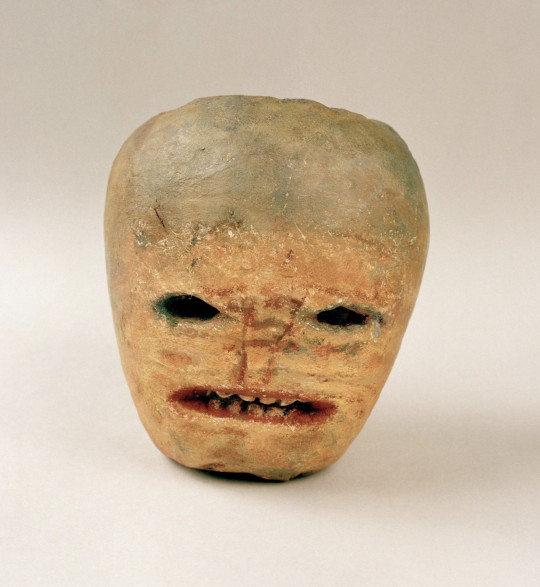
木にまつわる伝説・神話
ケルト人の樹木の信仰 (21)
EはEadha (ポプラ) - 9月21日・秋分の日
『ささやきの木、震える木 〜 ケルトの木の暦(参照)・秋分、暗闇に移るとき』
星: 冥王星、水星、土星: 宝石: ブラック・オパール、; 性: 女性; 守護神: ベルセポネ、ハデス; シンボル: 聞くこと、恐怖の克服+勇気、楯、暗闇の中の光明
ポプラ (セイヨウヤマナラシ‘山鳴らし’) の木はすべて、北半球の北部で夏が涼しく寒い地域に自生し、南は山や高原などの標高の高い地域に広がっている。
ポプラは、葉が風で「震える」ことから、山鳴らしと呼ばれている。これは、幹や枝の空気抵抗を減らすために葉柄が平らになっているためで、どんな微風もとらえ、その度に葉は震え、はためき、さらさらと柔らかな音を立てる。秋になると、葉は鮮やかな黄色に色づき、時には赤くなり、さらに色あせて黒くなると落葉する。
古代ケルト人は、風は神の言葉を伝える使者と信じていたため、風と同調するものは何でも神聖視していた。ポプラの木も同様だ。すべての木の中で最も優れた耳を持つポプラは、いつも神の声に応じて葉をそよがせていたのだ。
ところが、死や地下の国とつながりの深いポプラは、不幸を招く木とみなされるようになった。その昔、死体や墓はフェという名前の、ポプラでできた杖で数えられていたし、この杖で打たれると災難がふりかかると人々はひどく恐れていた。四季、安息、再生との関わりはしばしば見過ごしにされ、恐怖に身をすくませた多くの人たちは、風にそよぐポプラの葉音に忌まわしい声だけを聞き取った。しかし、ポプラの教えは、死の恐怖、未知なるものへの恐れ、そして恐怖心そのものを克服することにあるのだ。ポプラは、アイルランドのケルト人に「楯の木」と呼ばれ、彼らが楯をつくるのに最も好んだ木と言われている。それは、ポプラが単に心強い防具になっただけに留まらず、ひとたびポプラの教えを我がものとしたなら、未知なるものを前にしてもたじろがないように守ってくれたからに他ならない。
ハロウィン (ケルトのサウィン祭)の期間中、ポプラから作られたお香が焚かれ続ける。���ロウィンは、現世と冥界の距離が最も近くなる時期であり、新年を迎える期間でもある。サウィンは、1年の始まりである11月1日に行われる新年の祭りでもあるが、同時に死者の祭りでもある。年末から新年が始まるまでの夜は、あの世との境界がなくなり、死者の魂が親族を訪ね、悪魔や悪霊が農作物や家畜に被害を与えると信じられている。
古代ケルト文化圏では、悪霊を追い払うためにカブやジャガイモを刻んで中に燠火を入れていたことが知られている。アイルランドにはカボチャがなかったからだ。イギリスでは大きなビーツが使われた。移民がカボチャを彫る習慣を持ち込むと、アメリカ人はカボチャからジャック・オー・ランタンを彫るようになった。
#trees#tree legend#tree myth#folklore#celtic tree calendar#celtic belief#aspen#trembling aspen#quacking aspen#Samhain#jack o lantern#celtic traditions#nature#art#whispering tree#autumn equinox
109 notes
·
View notes
Text
Cold Moon - December 26, 2023

Bundle up, witches! It's time for the Cold Moon!
Cold Moon
The Cold Moon is the name given to the full moon which occurs in the month of December, particularly appropriate this year as the full moon will occur late in the month, smack in the middle of the bleak midwinter.
This will be another month when the moon appears full for two nights in a row, so we'll have a full moon for Christmastime, with peak illumination on Dec 26th at 7:33pm EST. (A perfect aesthetic for those who are fans of the classic poem "A Visit From St Nicholas" aka "Twas the Night Before Christmas." Personally, I'm holding out hope that we'll have the snowy conditions to match, though it's a long shot.)
Like most full moon names, the Cold Moon takes its' moniker from an English translation of a traditional name used by one or more North American indigenous groups. There are a number of indigenous names that reference the wintry conditions when this moon occurs, including Snow Moon (Haida, Cherokee), Winter Moon (Tunica-Biloxi), Hoar Frost Moon (Cree), and Long Night Moon (Mohican). More evocative names include Frost Exploding Trees Moon (Cree) and Moon of the Popping Trees (Oglala), both of which refer to a phenomenon which occurs during extreme cold, when the sap inside a tree freezes and the expanding pressure causes portions of the bark or even entire limbs to "pop" with loud cracking sounds that can be heard for miles.
Other names for the December moon include Yule Moon (Norse origins), Oak Moon (Celtic origins), and Bitter Moon (Chinese origins).
What Does It Mean For Witches?
The year is winding down. It's time to wrap up our projects and put aside what we haven't finished or no longer need. Rather than berating ourselves for the things we didn't finish or didn't accomplish, this is a time to give ourselves some grace and celebrate our successes and triumphs and the things we DID accomplish.
With only one page left on the calendar, many of us are already looking ahead to the new year, making plans and setting goals. This is a good time to brainstorm and engage in a bit of broad-view planning. Sketch out the things you'd like to see or do or try in the new year. Give voice to your dreams and start thinking of ways to make them happen.
The Cold Moon also falls soon after the winter solstice this year (Dec 21), which could be a boon for anyone looking to time their seasonal rituals in optimal fashion. A working could be begun on the solstice and built up to culminate on the night of the Cold Moon, just before the start of a new calendar year.
What Witchy Things Can We Do?
Have a small supper gathering with friends or family (holiday themed or not, it's up to you) to share joys and fellowship and enjoy good food and drink. Make wishes together for the new year. (Wish jars can be done individually or as an informal group ritual. Sharing wishes anonymously can be a fun party game.) A "White Elephant" gift exchange with inexpensive or homemade witchy goods for your circle could be fun too!
Make a wish jar for the new year on the winter solstice and put it out to charge under the Cold Moon. Cleanse any of your tools or crystals or accoutrements that you use moonlight for one more time this year.
This is the perfect time for divinations and goalsetting for the coming year. Pull out your favorite divination tools and your 2024 planner and sketch out the coming year. You can also try candle wax divination with holiday candles, if that's something that interests you.
Also, save those seasonal bayberry candles for future use! They're great for debt repayment and money-drawing spells.
If you need some ideas for a fun family activity, you can feed the birds for good luck, either with scattered birdseed or pinecone birdfeeders. String dried fruit slices, cinnamon sticks, pinecones, holly leaves and berries, and other seasonal faves to make garlands. Stick apples or oranges or clementines full of cloves in pretty patterns to make pomanders.
Use those fibre arts skills to create a special piece to keep your home warm and safe and well-supplied until spring. It doesn't have to be anything big - a simple weaving or single square will do. Crochet or cut out snowflakes for your home decor. If you want to get fancy, pick up a ball of cotton warp thread and look for old doily patterns - they look great as hoop weavings hung on the wall (or make a witch web in winter colors).
Make one more batch of moonwater to carry you through to the new year. If it happens to snow or freeze where you live, you can save clean snow or icicles for special (non-drinkable) elemental water, which can be a fun base for moonwater as well.
And speaking of elements, make sure to remember in all your seasonal decorating that fire safety is paramount. Be careful with your candles, warmers, light strings, plugs, extension cords, and cables. DO NOT "daisy chain" your extension cords or power strips. Never leave candles or wax warmers or simmer pots unattended, and turn off your holiday lights before bedtime. Safety first, witches!
Thanks for joining me for this exploration of full moon magic. See you next year!
Happy Cold Moon, witches! 🌕🧊
Further Reading:
Additional Lunar Calendar posts
Moon Rise Calculator - The Old Farmer's Almanac.
Cold Moon: Full Moon in December 2023, The Old Farmer's Almanac.
Full Moon December 2023: Illuminating the Cold Moon's Spiritual Meaning, The Peculiar Brunette.
How Do Trees Survive The Winter?, National Forest Foundation.
How to Make Pomander Balls, The Old Farmer's Almanac.
Fun Kid's Activity: Winter Pinecone Bird Feeder, Audubon Southwest.
Everyday Moon Magic: Spells & Rituals for Abundant Living, Dorothy Morrison, Llewellyn Publications, 2004.
(If you’re enjoying my content, please feel free to drop a little something in the tip jar or check out my published works on Amazon or in the Willow Wings Witch Shop. 😊)
224 notes
·
View notes
Note
do you have any tips for protestant christians who want to practice advent in a more ritualistic way?
Happy Advent, beloved! I love this question!
Hopefully this isn't too obvious but just in case: Advent wreaths were originally a Lutheran tradition and they're my favorite holiday ritual! I'm in the minority in that my church's Advent color is blue, but many people's are purple and pink. The Wikipedia page lists some different traditions—some people give a meaning to each candle. Generally people will have five and light one for each week of Advent and then one for Christmas. Advent is cut short this year (Advent 4 and Christmas Eve are the same day) but it's still never too late to start participating in a season! One day of mindful Advent is more precious than weeks of half-hearted Advent.
I have blue and gold candle holders, but many places sell Advent-specific candles and holders, or you can just get four or five candles (real or fake) from around the house and arrange them! I haven't gotten around to it yet this year but I like gathering evergreen branches from outside and arranging them in more of a proper wreath, but a fake wreath would work too, or just candles on a cloth or table.
I also saw this 20-minute Advent candle set, where you can light a candle each day and let it burn down while praying/meditating/writing. You could set a timer and do something similar with any type of candle. Candles are a staple of winter holidays for a reason—light and warmth, obviously, and there's something about having a natural source of those things existing in your house when so much of the rest of your life may be artificial. I thank God my house has heating, but I also seek out the ways this earth provides what we need, if we only know where to look.
Some form of counting down to Christmas is a main theme of Advent traditions, and I don't think this is a bad thing at all, although I do see my Advent wreath as more of a fulfillment than a countdown. I always encourage people to take at least a moment for just Advent. We could look at Lent as a countdown to Easter, but we might miss the journey. And after all, Holy Week and Easter is the culmination of our calendar, not Christmas. We are still in the beginning.
My family doesn't usually put up a Christmas tree until around the 23rd, and I don't listen to Christmas carols until Christmas Eve. I don't refuse to participate in secular/cultural Christmas events/traditions before then, but Christmas as religious practice is twelve days for us, starting the 25th. I have time to make room, to prepare. I'm listening to Advent music now, to ground myself in time. I don't say this because I think everyone should necessarily do this (by all means, find room for joy wherever you can), but because an Advent value that I find meaning in is patience. Christmas exists, joy exists, salvation exists—but what happens in the time before those things? What happens if we're not there yet, if we perhaps have to wait our whole lives? We do not know the future, but there are things we can see, and even more things we can trust in. How can we practice hoping for it all?
This year I'm reading Watch for the Light: Readings for Advent and Christmas (the last gift my grandfather gave me), and it's marking my days in a similar way candles do—connecting me with the world, setting aside time, bringing me back to why I exist the way that I do. There are countless devotional/topical books out there—as well as Watch for the Light, I would recommend Preparing for Christmas by Richard Rohr and Accompanied by Angels: Poems of the Incarnation by Luci Shaw (which can double as a Lenten/Easter book as well). I'm also looking forward to reading in future years Celtic Advent by David Cole and WinterSong by Madeleine L'Engle & Luci Shaw.
If you don't usually attend worship services, Advent is a lovely time to start—it's the new year, after all! My city has a caroling night downtown, and you could look for similar events in your community. You could also start new worship traditions—my uncle hosts a Christmas carol singing circle every year, and his apartment is squished full of happy people, some Christian and some not, singing until the neighbors complain.
Speaking of the new year, that's what this is for many of us, and one way we can acknowledge that is by thinking about the past year and/or the year to come. What was last Advent like for you? Where are you now? Why are you seeking out more ritual this year? Are there future seasons in the church year that you want to further observe? What joy and grief and community do you see on the road ahead of you? What can you not even begin to imagine? Advent can be a beginning for all of it, if you let it. And Advent is the ultimate time to contemplate the past and the future—as we remember Jesus coming two thousand years ago, as we experience him every day, and as we look to a second coming that none of us understand but can occasionally stand to ponder.
There are the little things, too—writing Christmas cards is very ritualistic for me, as well as making gifts, and preparing for Christmas in a material way, especially if it's for others, can be a lovely ritual! Volunteering, preparing a home, creating, writing, taking a walk--anything, really, can be a ritual if we do it purposely. We don't always have to add something to our life—we can live something we already live in a new way.
And then there's the other kind of practice: emptying. We talk about this most when we encounter Lent, but I think there's a place for it here, too (and always). I don't mean abandon our responsibilities/hobbies/relationships, but most of us have too much. It is a blessing to have, but it can also be a blessing to let go. Many of us overwork ourselves during December, at work, at school, financially, socially, around the house. I've learned to look at busy-ness as a gift, but I also work to not fill up my life until there's no room for the season. There are people who fast during Advent, but there are other ways to make space in our lives to fill up with God, and Advent encourages us to spend time in that space. God is coming, a thief in the night, a late guest, an overlooked baby. Do you have room? Do you still have the attention span and energy? Will you even notice?
Christmas is many things to many people, and preparing for it is similarly diverse. I'm carrying a lot of grief with me this year, from both family and world tragedy. I know a lot of people who feel pressured to be happy during the holidays, and that breaks my heart—and it also makes me wonder how much having a ritualistic Advent since I was a kid has helped me avoid that. Happiness was never a value my family held—it was beautiful, but not inherently holy. Emotions come and go. Love exists infinitely, and patience and hope can be practiced and lived out regardless.
There are so many traditions, especially in the US, that leave people hungering for ritual and material practice—I've found a lot of physicality in Lutheranism, similar to my Catholic family, but I know there are those who have never really had that. When we seek ritual, it's often because there's something (or many things) in our practice either growing up or currently that we don't have and seek—whether that's the sensory experiences of incense and stained glass, the daily habits of rosary or novena, the liturgical practice of seasons and services, choral and hymn-singing, contemporary music, contemplation, academia, casualness, relatability, mystery, social justice, huge gatherings, tiny meetings, or any of the other Christian experiences that usually traditions don't or can't have all at once. When we seek ritual, we seek what we don't have, but often find what we already have as well. So many things are rituals that we take for granted because we've always had them or gotten used them. Seek new rituals, and seek what is already in your life that you can decide to do. Take your traditions, and find the traditions you didn't receive but hunger for, and make a life. You have time—Advent happens every year, and as far as we know and can hope, we will have many more Advents.
Ultimately, ritual is doing it all on purpose. It's finding rhythm. So much of our lives are accidental, and this can be beautiful and holy, but you have come seeking the things we invite. And yet even things that happen to us can become purposeful, as Mary teaches us: "Let it be with me according to your word." Whether she had a choice is sometimes discussed, but to me often the more relevant question is how she dealt with what came her way. Ritual is taking what we are given and doing it on purpose, and Advent gives us a long tradition, passed down through generations, of active waiting. We have no choice but to wait for the future, but today we will do it with our eyes open. Act as if the world is going to turn upside down—and you will notice it is, all the time.
In Watch for the Light, Henri Nouwen writes, "A waiting person is a patient person. The word patience means the willingness to stay where we are and live the situation out to the full in the belief that something hidden there will manifest itself to us. Impatient people are always expecting the real thing to happen somewhere else and therefore want to go elsewhere. The moment is empty. But patient people dare to stay where they are. Patient living means to live actively in the present and wait there. Waiting, then, is not passive. It involves nurturing the moment, as a mother nurtures the child that is growing in her."
Whatever rituals you invite in or find that you already have, however you nurture the moments that make up this season, I pray they make room in your heart for what God can bring. As Rilke tells us (in teaching how to approach art, but what else are the mysteries of this season?), "Everything is gestation and then bringing forth. To let each impression and each germ of a feeling come to completion wholly in itself, in the dark, in the inexpressible, the unconscious, beyond the reach of one's own intelligence, and await with deep humility and patience the birth-hour of a new clarity."
<3 Johanna
#asks#if you can give lutherans nothing else. you gotta hand it to us for advent wreaths. we kinda went off with those
45 notes
·
View notes
Text
Lord Morpheus/Somnina deep dive info

Herbs • Poppy, Poppy trees, poppy seeds, ivory, Dandelion seed, Chamomile, mugwort, lavender, jasmine, passionflower, basil
Animals• Bats, Nocturnal animals, Cats, Fireflies, Moths, Butterfly, Racoons, Wolves, Crows, Halcyon birds, sheep “counting sheep” (my personal thinking)
Zodiac • None, I couldn't find any evidence, perhaps Sagittarius, Capricorn, Aquarius, or Pisces because they were born in the winter.
Colors • Black, Blue, Gold, Purple, Silver, Red, some folks like associating neon colors and grey. I also think white.
Crystal• Amethyst, Herkimer Diamond, Scolecite, Hematite, Lapis Lazuli, and gemstones associated with dream magick
Symbols• Horns (he passes through a horn gate each night), Portals, gates, feathers, wings, skeleton keys, stars, night, ivory, tea, baths, sweet coffee
wear in their honor • sleep masks, PJs, slippers.
Diety of• of dreams, of sleep
Patron of• from/shape (his name translates to that, and shapeshifts in dreams.), messages to the unconscious, prophecies to the unconscious, influencing people unconsciously, hypnotizing, dreaming about the future, daydreaming, dream jobs, human shapes, hallucinations of humans, meditation, desire, hope, insomnia, opium-based medication, lucid dreaming, imagination, schizophrenia or schizophrenia-like disorders or illnesses, creativity, astral travel, encouragement, communication, divination
Element• Water, air
Offerings• Honey, honey cake, wine, fish and incense, Melatonin, Sleep-related gemstones and crystals, Skulls, Dream Catchers (ethnically obtained), Any type of stress reliever, and sleep indulgent tea, Ivory and/or Horn items, Sleep-related spells,
The imagery of his associated animals, Feathers, demon imagery(?), imagery of his animals, offerings of things like moths, butterflies, skulls, and feathers (ethically sourced), melatonin gummies, skeleton keys, Dream Pillows (herbal satchels filled with lavender to place under your pillow for better sleep)
Devotional• Track your dreams on a calendar, Keep a dream journal, Get enough sleep, Turn off your electronics 1 hour before bed (gets you in deeper sleep faster), Perform a night ritual, Learn about lucid dreaming and practice it, Write a letter to Morpheus before going to bed, Prayers related to Morpheus, Prophetic inducing herbs, Creating a playlist for him with songs that help you sleep, drink mugwort or chamomile tea before bed, set and try to stick to a night routine, write letters or jokes to him, write stories/a book, wear or dress your bed in his associated color, keep crystals for him on your bed or bedside table, have a bath or shower before bed, speak to him before you sleep, go to a sleepover to his honor, washing your bed sheets, cleaning up ur bed, try making your own melatonin, practice divination, try controlling ur dreams
Ephithets• Μορφευς, Morpheus, Shaper of Dreams, Sandman, Mildest of the Gods, Balm of the Soul, Oneiros, Kai’Ckul, Lord L’Zoril, Shaper of Forms, Lord Shaper, Prince of Stories (The Sandman, Neil Gaiman), Dream Giver, Sleep’s Guest, Lord Shaper, Father of Dreams, Lord of the Night, He Who Tells Mortals Stories, Formshaper, Shadowmaker
Equivalents• Niorun (Norse), Angus (Celtic), Caer (Celtic), Bes (Egypt), Tutu (Egypt), Morpheus (Greek), Somnina (Norse).
Signs their reaching out• Sudden floating in dreams, better dreams, sleeping better, seeing him in dreams.
Vows/omans• Perhaps wedding vows.
Number• 1, 6, 7
Morals• Morally lawfully neutral follows the gods' bidding.
Courting• no one, but is seen as Iris's husband in some literature,
Past lovers/crushes• I couldn't find any, I think he is Ace? But that is not anyone's business. He is ‘said’ to date Iris because of always being togetherer
Personality• Morpheus is a very chill and comprehensive God. He’s understanding and he’s happy to help out if he can. He doesn’t ask for much when you worship him, as long as you’re making an effort he’s fine.
Home• Erebus, in the Underworld
Mortal or immortal • Immortal
Fact• Some say they were able to “heal”,
Curses• Insomnia, your dream of the ‘good future’ being wrong, your hopes and dreams crashing down, no dreams (If u like your dreams), feeling anger towards you in dreams and just in general. Your baby wakes up with a nightmare. The back/neck problems you wake up with.
Blessings• Good sleep, having good dreams, and your children going to sleep.
Roots• Ancient Greece, born probably in Tarturas
Friends• Iris, Zeus, Hermes, Hera, messengers in general.
Parentage• Pasithea and Hypnos, some say he came from Hypnos asexually, some say from Nyx asexually, I think Nyx.
Siblings• Oneiroi, Icelus, Phobetor, Phantasus
Pet• None.
Children • None
Appearance in astral or gen• often depicted with wings, he changes into whatever shape is needed at a given moment, decided as a young man in art, and has one ear with wing and one to hear with. He looks like he has short hair.
Festivals • I couldn't find any, I would say hibernation month, and just celebrate being able to sleep when animals are hibernating.
Season • winter
Day • I would say Saturday because I get the most sleep on Saturday, no school, and no worries, I couldn't find a historic one, or just make a day for him, many people do that for minor gods.
Status• Greek Minor god/personification, a part of the Oneiroi, and the leader of the Oneiroi. plays a major role in day-to-day life. He is a Cthonic deity
What angers them • Insulting them,
Music they like• I would think Sleep Music, Sleep Asmr
What they like • sleep.
What they dislike• I would say physical touch since he disappears all the sudden when he is almost being touched, I think he only touches those he ‘is okay with’ as a sign of trust or adornment because I heard a person back then say they use to get tapped by them
Planet• Moon (phase new)
Tarot cards• The Four of Swords and the Tower, message card (based on sleep and messages, each their own.)
Reminds me of• sleep, the good resting kind of sleep
In my opinion • they are pretty rad, and strangely I've been having shit sleep, ain't he just a sweetheart.
Scents/Inscene • Opium, Lavender, Jasmine, Chamomile, Sandalwood, and any other calming scents
Prayers•
1.
Ever-shifting Morpheus, lord of the Oneiroi
who bring us our dreams, true or false. Morpheus, swift-soaring courier, twilight messenger of the gods, kind one, dweller in the shadowed land of dreams, dark-winged god who shapes the visions of the night, who tells the tales that must be told, who strips us bare of secrets, who clothes hard truths in subtle raiment, child of the black night, child of the shrouded dark, in the realm of illusion you are king. Morpheus, harbinger of change, concealer of clues, you bury bits of truth among our wishes and fancies; with your aid can we see into the mist of the unknown, with your aid can we find the hidden pieces of the self. Morpheus, I praise and honor you.
2.
With a whisper I call you, o Morpheus,
lord of dreams, greatest amongst the Oneiroi. I call to you as Hypnos draws near.
Phantasos, ancient messenger who
crafts wonder into form who conjures in our minds a tapestry otherworldly. Greatest molder and master of lights, many-shaped, you cross the night and take on any face or voice any hue or sound you so desire. I ask you, my lord: shield me from pain and fear in my dreams, let no anguish burden my heart as I sleep. This only I request: that within your great creations I may rest and through your hand I may find safe haven. That my words may reach you, o Morpheus whispered though they may be as Hypnos draws near.
Links/websites/sources •https://en.m.wikipedia.org/wiki/Morpheus
https://www.thecollector.com/morpheus-greek-god/https://www.britannica.com/topic/Morpheus-Greek-mythology https://www.britannica.com/topic/Hypnos https://despena.gr/morpheus-the-ancient-greek-god-of-dreams/https://kreweofmorpheus.clubexpress.com/content.aspx?page_id=22&club_id=174762&module_id=305302 https://www.ancient-origins.net/myths-legends-europe/morpheus-greek-god-dreams-who-delivered-messages-gods-mortal-world-002318#google_vignette How Ancient Egyptians Interpreted Dreams - UnEarthed Penn Dream Angus: The Celtic God of Dreams (The Myths) - Amazon.comAmazon.com Caer Ibormeith - Thoughts on PapyrusThoughts on Papyrus Who is Niorun? - Northern Tradition Paganismhttps://greekpagan.com/tag/morpheus/
HUGE HELP FROM

#the gods#hellenic devotion#hellenic polytheism#hellenic worship#greek gods#doing the research for you#greek mythology#ancient greek#greek pantheon#morpheus#lord morpheus#the sandman#greek myth#ancient greek mythology#hellenic polytheist#hellenic#hellenic deities#hellenic gods#hellenic paganism#hellenic pagan#hellenic polythiest#hellenism
34 notes
·
View notes
Text
2024 Celtic Tree of Life Wheel of the Year Lunar Calendar 🌜

The 2024 Celtic Wheel of the Year Calendar is ready! Featuring every solstice, equinox, moon phase, and Celtic holiday of 2024.
Printable versions and more backgrounds coming soon!
Check it out at WildHemlock.Com!
#moon#moon phases#moon calendar#lunar calendar#2024 moon phases#astrology calendar#2024 calendar#celtic#irish folklore#celtic mythology#tree of life#wheel of the year#witchery#witchy#baby witch#witchblr#astronomy#astrology#moon child#witch aesthetic#witchy vibes#witch#celtic paganism#pagan witch#samhain#yule#celtic knot#digital art#kitchen witch#witches
1 note
·
View note
Text
Extract from Aziraphale's Journals: Travels in Medieval Philippines
時 永樂 辛未 九月 十二日 也
[Archivist’s note: In this period, Aziraphale used the Chinese dating system. In the Western Calendar: 12th September 1420.]
Tarung Village, Bagobo, Sulu Empire
[Archivist’s note: the Sulu Empire was located in Mindanao, the third largest Island in the Philippine Archipelago. The Bagobo tribe still exist today, however, their language and culture are listed as ‘critically endangered’.]
//
The local people have a story about a terrible demon. A buso. They call him Mamili. He is the Great Serpent.
Right now, coconut ink fresh on my quill, the light from the apitong oil candle casting flickering shadows over my hands, that very demon is asleep in my bed.
//
Today, I was humbled.
I stood before a tree that was almost a thousand years old. Wider than the mighty three-tiered pagoda of 杭州市 [Hangzhou] and taller than the dark spires of the Notre Dame, her presence dwarfed me into insignificance. It is rare for me to feel the ghost of mortality.
This great, cathedralic plant soared on hundreds of pillars, the thick stems braided together into celtic knots like broken spiderwebs, threads of time twining together over the centuries. High above, handfuls of delicate oval leaves fanned outwards, pitifully meagre compared to the great mass of bark below.
One was reminded of a liquid. Rivulets of tree had fallen from the sky, dripping downwards and solidifying as stalactites do.
Dozens of beings made their home within. Creepers, young and old alike, raced each other in their clamber upwards along twisting stems that provided perfect purchase. Here and there, peppery flowers flourished in a startling fuchsia. With eyes more focused than any mortal, I could see the lines of biting ants that had made their home close to the ground, and in another quarter, ink-black antlered beetles chirruped from within their nests.
“The Grandmother balete tree,” said the spiritual elder who stood beside me. They are known as Buhawi after the God of the Four Winds.
Whilst I was preoccupied with awe, they put down their burden. The wooden stopper did little to mask the vinegar tang of coconut liquor seeping out from the baked clay amphora. I mimicked them. In my wicker basket, I had carried the offerings.
We stood, side by side, and let the natural world cradle us. I closed my eyes. There were a million tiny sounds, but it could never be overwhelming for it all formed part of the same song. Every murmur, cry, or rustle belonged there within the shadow of that majestic, old being.
In that beautiful moment, so did I.
“Thank you,” I said. “I see why the Datu was so insistent that I accompany you here.”
They responded with a knowing smile which cracked the worn lines of their weathered face. They never smiled with their teeth, perhaps to hide the red betel-nut stains.
“Come,” they said, “help me with the offerings, and I will tell you about Grandmother balete. I will tell you her story.”
And so, as we prepared the areca nuts, the lime, and the betel leaf, Buhawi told me the tale of the Great buso who is called Mamilli.
[Read the rest of this 4k short extract on AO3]
#gomm 2024#good omens minisode#good omens#go#mygofic#myfic#philippines#pinoy#historical fiction#historical snippet#ineffable husbands#aziraphale#crowley#good omens fanfictoin#good omens fanfic
19 notes
·
View notes